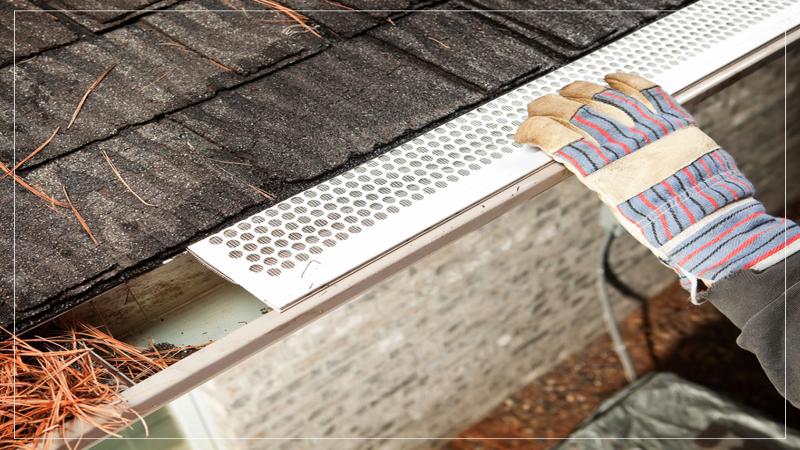When it comes to gutter installation, there are a few key things you need to keep in mind in order to ensure a perfect install. First, you need to make sure that your gutters are the correct size for your home. This can be determined by measuring the length and width of your roof and then consulting with a professional gutter installer. Once you have the correct size gutters, you need to make sure they are properly installed. This means that they should be level and securely attached to your home. If your gutters are not level, they will not be able to properly drain water away from your home, which could lead to water damage. Finally, you need to make sure that your gutters are properly cleaned out on a regular basis. This means removing any debris that may have accumulated in them so that they can continue to function properly.
How do you tell if gutters are installed correctly?
One way to tell if your gutters are installed correctly is to look at the joints between sections of gutter. These joints should be sealed with silicone caulk or another type of sealant. If the sealant is cracked or missing, then the joint is not sealed correctly and water can leak through.
Another way to tell if your gutters are installed correctly is to look for any gaps or spaces between the gutter and the fascia board. These gaps can allow water to leak behind the gutter and cause damage to your home.
yet another way to tell if your gutters are installed correctly is to check for any loose or missing hangers. Gutters are typically hung from hangers that are screwed into the fascia board. Over time, these hangers can loosen and fall out, causing the gutter to sag or even fall off completely.
Finally, you should check the downspouts to make sure they are securely attached and not leaking. Downspouts should be fastened to the gutter with screws or rivets, and they should be sealed at the joints with silicone caulk or another type of sealant.
If you notice any of these problems with your gutters, then they are not installed correctly and need to be fixed.
What is the rule of thumb for gutter installation?
- Make sure to measure the length of the gutter runs and the width of the gutters before purchasing materials.
- It is important to install gutters that are the proper size for the home; if the gutters are too small, they will not be able to handle the volume of water that can runoff from a heavy rain, and if they are too large, they will be too heavy for the home’s structure and could cause damage.
- Be sure to clean the gutters and downspouts before installation to remove any debris that could clog them.
- It is essential to install gutters with a slight slope so that water can drain properly; a minimum slope of 1/4 inch per 10 feet is recommended.
- Secure the gutters to the home with hangers or brackets that are properly sized and installed according to the manufacturer’s instructions.
- Inspect the gutters regularly to make sure they are clean and functioning properly.
What is the optimal gutter shape?
- K-Style: This is the most common type of gutter and is named for its resemblance to the letter K. It is a popular choice because it is relatively inexpensive and easy to install.
- Half-Round: As the name suggests, this type of gutter is half-round in shape. It is a popular choice for historic homes because it has a more traditional look.
- Box: This type of gutter is square or rectangular in shape and is typically used in commercial applications.
The optimal gutter shape for a given application will depend on a number of factors. A qualified contractor should be consulted to ensure that the best possible gutter system is installed.
Should gutters blend in or stand out?
There are a few schools of thought when it comes to choosing the right gutter color. Some believe that gutters should seamlessly blend in with the trim of the home for a clean look. Others believe that gutters should be a contrasting color to add a pop of interest. Ultimately, the decision comes down to personal preference. If you want your gutters to blend in, choose a color that closely matches the trim of your home. If you want your gutters to stand out, choose a color that will contrast with the trim.
Should gutters be flush with fascia?
No, gutters should not be flush with fascia. There are a few reasons for this. First, if gutters are flush with fascia, then water will run down the side of the house instead of into the gutters. This can cause water damage to the house. Second, if gutters are flush with fascia, then leaves and other debris can clog the gutters more easily. Third, if gutters are flush with fascia, then they are more likely to get pulled off the house during a storm.
How much should a gutter drop every 10 feet?
A gutter should drop about 2 inches for every 10 feet in order to ensure proper drainage. This is especially important on homes with steep roofs, as the steeper the roof, the greater the chance of water pooling in the gutters and causing damage. If your gutters are not draining properly, you may notice water stains on your home’s exterior or even leaks in your basement or crawl space.
What is the ideal gutter depth?
There is no definitive answer to this question as the ideal gutter depth will vary depending on the specific needs of the home or building in question. However, a good rule of thumb is to make sure that the gutters are at least four inches deep in order to ensure that they can effectively catch and channel water away from the structure.
How much standing water in gutter is OK?
It really depends on the situation. If the gutters are clean and the water is flowing freely, then a little bit of standing water is probably okay. However, if the gutters are clogged, then the standing water can cause problems. The water can back up and cause the gutters to overflow, which can lead to water damage. In addition, standing water can attract insects and other pests, which can be a nuisance.
Final Talk
If you’re planning to install gutters on your home, it’s important to understand the process and what details you need to know to get a perfect install. With a little research and planning, you can ensure that your gutters will be installed correctly and provide years of protection for your home.
















